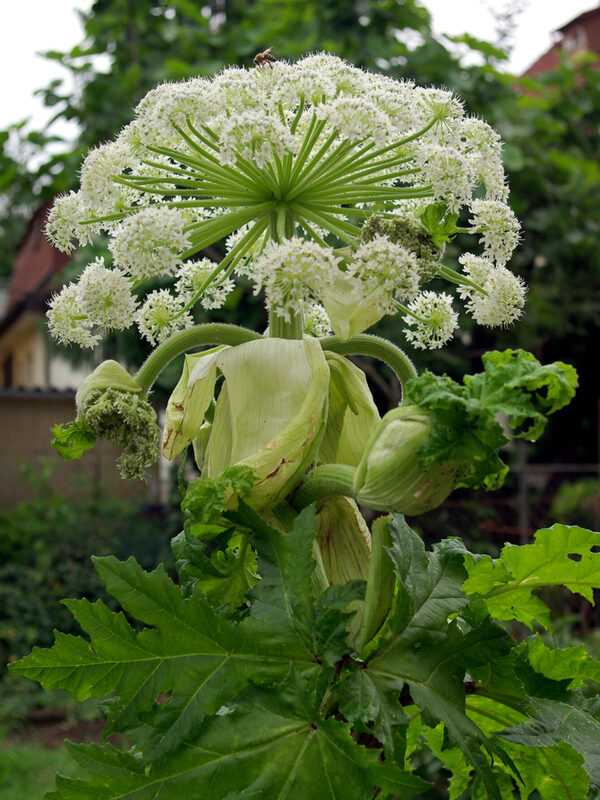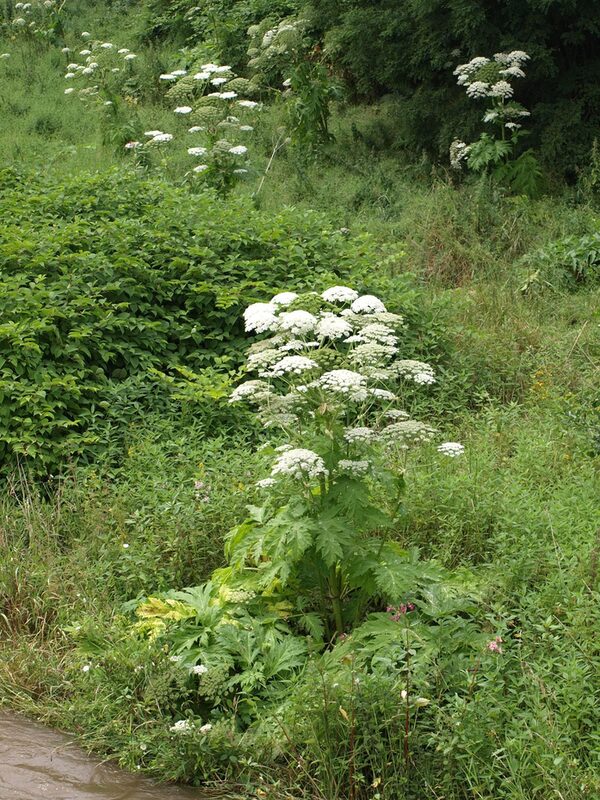Herbaceous perennial - a dangerous beauty
The name speaks for itself: the Hercules plant, also known as giant hogweed, is hard to miss with its huge, incised leaves and large white umbels. Introduced from the Caucasus as an ornamental plant in the 19th century, it has now become a real pest in many places - including Wiesbaden.
Once Herbaceous perennial has established itself, it multiplies rapidly due to its effective seed production and displaces the native flora. In addition, its size shades out the other plants around it, so that they no longer get enough light to grow. The result is a reduction in biodiversity.
The city is fighting the plant on its properties at great expense in order to curb its spread. The city is also calling on property owners to take action against the giant hogweed.
The plant is problematic because it contains a poison, "furanocoumarin", which can cause severe allergic reactions. Touching the plant in combination with sunlight causes severe burn-like symptoms and long-lasting, poorly healing wounds.
Even dried stems and flowers still contain the treacherous substance.
Playing children are particularly at risk if they play hide and seek among the plant giants or make blowpipes from the stems.
First aid
- If the skin has come into contact with parts of the plant or plant sap, clean the affected areas immediately with soap and water.
- Then apply a sunscreen with a high sun protection factor and avoid the sun for two to three days.
- If skin reactions occur, a doctor should be consulted.
Tips for your own garden
To contain the spread of giant hogweed, the following should be observed:
- Do not plant any Hercules perennials in the garden.
- Remove existing Hercules bushes before they spread further.
- Do not dispose of green waste from the garden in the open countryside.
- If possible, bag flower and fruit heads so that no seeds are scattered.
- Do not put flower heads and seeds in the compost, but dispose of them as residual waste.
- Wear long pants, a long-sleeved top, gloves and protective goggles or sunglasses when removing the plant.
- The spreading of seeds should generally be avoided.
Successfully combating
The most effective method is to dig up the plant in April or May or to cut off the upper root layer at a depth of around 15 centimetres. If the Hercules perennial has already formed mass populations, the only remedy is to cover the area with black foil for as long as the vegetation period lasts. However, success must be monitored.
If you have any further questions about the Hercules perennial, please contact the staff of the Environmental Agency.
Documents
Contact us
Environmental Agency
Address
65189 Wiesbaden
Postal address
65029 Wiesbaden
Arrival
Notes on public transport
Bus stop Statistisches Bundesamt; bus lines 16, 22, 27, 28, 37, 45, X26, x72, 262
Telephone
Information on accessibility
- Barrier-free access is available
- The WC is barrier-free

